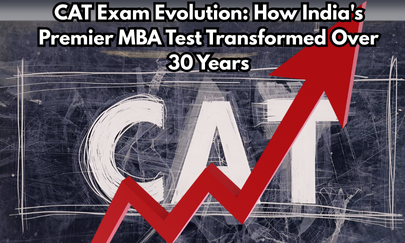
The CAT (Common Admission Test) and the GMAT (Graduate Management Admission Test) are two of the most popular entrance exams for MBA aspirants in India and abroad. Both tests are designed to assess a candidate's aptitude for business and management education, but they have distinct features, purposes, and requirements. Understanding the key differences between these exams can help students make informed decisions about which test to take based on their academic and career goals.
1. Purpose and Scope
CAT
The CAT is primarily used for admission into the Indian Institutes of Management (IIMs) and other top business schools in India. It is an India-specific exam, and while some international universities may consider CAT scores, its recognition outside India is limited.
GMAT
The GMAT is a global test, widely accepted by business schools worldwide, including those in the United States, Europe, and other international regions. It is used by institutions to evaluate candidates for MBA and other management programs.
2. Test Structure
CAT
Sections: CAT has three sections:
- Verbal Ability and Reading Comprehension (VARC)
- Data Interpretation and Logical Reasoning (DILR)
- Quantitative Aptitude (QA)
Duration: 2 hours (120 minutes), with 40 minutes allocated for each section.
Question Type: Primarily multiple-choice questions (MCQs) with some non-MCQ type questions. Negative marking applies to wrong answers for MCQs.
GMAT
Sections: GMAT consists of four sections:
- Quantitative Reasoning
- Verbal Reasoning
- Data Insights
Duration: 3 hours and 7 minutes.
Question Type: GMAT questions are mostly MCQs, but the structure differs, including data sufficiency and integrated reasoning questions. The exam is computer-adaptive, meaning the difficulty level changes based on your performance.
3. Scoring System
CAT
- Score Range: The CAT score is calculated out of 198, and percentile ranks are used for evaluating candidates.
- Negative Marking: Yes, -1 for every incorrect MCQs.
GMAT
- Score Range: The GMAT score ranges between 200-800. The score is based on a candidate’s performance in the Quantitative and Verbal sections. The AWA and IR sections are scored separately.
- Negative Marking: No negative marking.
4. Difficulty Level
CAT
The CAT is known for its tricky and conceptual questions, especially in the Quantitative Aptitude and DILR sections. CAT requires strong analytical thinking and time management skills, with each section demanding focused attention.
GMAT
The GMAT’s Quantitative section can be relatively easier compared to CAT, but the Integrated Reasoning and Analytical Writing Assessment add complexity. The computer-adaptive nature of the test adds additional pressure, as each question’s difficulty adjusts based on the candidate's previous answer.
5. Exam Frequency and Validity
CAT
- Frequency: Conducted once a year, typically in November.
- Validity: CAT scores are valid for one year.
GMAT
- Frequency: Conducted five times in a year.
- Validity: GMAT scores are valid for five years.
6. Application Focus
CAT
Primarily focused on Indian business schools like IIMs, FMS, MDI, SPJIMR, and other top MBA institutes.
Emphasizes problem-solving, data analysis, and comprehension in a time-pressured environment.
GMAT
Recognized by business schools across the world, including prestigious institutions like Harvard, Stanford, INSEAD, and London Business School.
Some colleges in India also accept GMAT for its full time and executive MBA which are:
IIMs, MDI, SPJIMR, IMI, IMT, MICA, TAPMI and many more.
Assess analytical writing, reasoning, and quantitative skills with a strong focus on management aptitude.
7. Cost and Fees
CAT
Registration fees for CAT are relatively low, typically around ₹2,500 (for general category candidates)
GMAT
The GMAT is significantly more expensive, with a fee of approximately $275 (around ₹23,000). Additionally, rescheduling or retaking the test can incur extra costs.
8. Preparation Time and Strategy
CAT
Preparation for CAT requires a solid grasp of high school-level mathematics and strong verbal skills. Candidates typically dedicate 6-9 months to CAT preparation, focusing on improving their speed and accuracy across all three sections.
GMAT
GMAT preparation involves mastering both the content and the test-taking strategy, particularly because of the adaptive nature of the test. Candidates generally spend 3-6 months preparing for the exam, with special attention to verbal reasoning and analytical writing.
If you're aiming to pursue an MBA in India, particularly in the IIMs and other top Indian B-schools, CAT is the obvious choice.
However, if you're looking for global opportunities and are open to pursuing an MBA abroad, GMAT is the right fit. The GMAT also allows flexibility in scheduling and a longer validity period, making it more versatile for international applications.
Ultimately, the choice between CAT and GMAT depends on your career goals, target schools, and preparation style. Both tests have their unique challenges, so it's important to assess your strengths and decide which exam aligns better with your MBA aspirations.
Any question in your mind?
Connect to our counsellor: 8826807515












